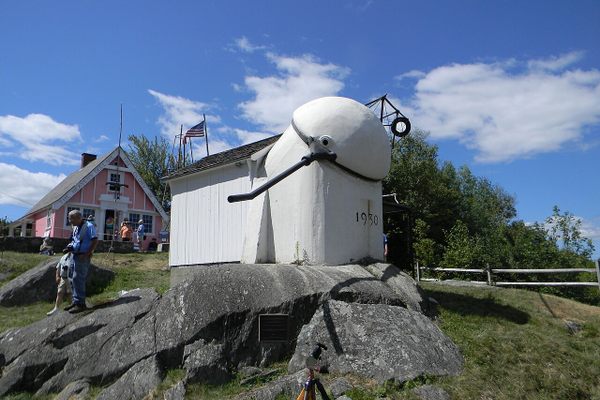AO Edited
Bellows Falls Petroglyphs
These mysterious petroglyphs in Vermont reflect a troubled history in the treatment of Native American culture.
On the bedrock wall at the base of the Great Falls in Vermont, is a prehistoric petroglyph site.
Bellows Falls is home to two clusters of petroglyphs, located about 50 feet south of the Vilas Bridge, which crosses the Connecticut River. The mysterious carvings depict rounded heads with rough, minimalist features - eyes, mouths. Several of the heads have protuberances that look like horns or antennae, and may depict feathers worn as hair decorations. Various hypotheses place them at anywhere from 300-3,000 years old.
The first white person to write about the carvings at Bellows Falls was researcher David McClure in 1789, who noted that “the figures have the appearance of great antiquity” and ascribed them to the native people of the area - the Abenaki. McClure thought that the etchings marked the presence of evil spirits. In 1807-1808, Edward Augustus Kendall, a writer and antiquarian, speculated that the carvings were doodles of sorts, made while Abenaki fishers harvested the abundance of fish that could be found at the base of the falls. This theory stuck for generations. Of course, nobody thought to ask the local Abenaki people.
Throughout the 19th century, white men wrote and sketched descriptions of the stone carvings, portraying something very different than what is seen there today. Did the roiling waters of the falls erode the carvings? Did the men make stuff up? We do know that in 1930 or 1931, a local chapter of the Daughters of the American Revolution hired a professional stone carver to “recarve” the figures, which had become faint. In 1961, the faces were also painted bright yellow, so they could be seen better. Neither of these acts was a fantastic move historical-preservation-wise, as it made dating and identifying the petroglyphs even more difficult. Further, they were destructive, disrespectful acts at a site that remains important to some Abenaki people.
How closely do the figures seen at the site today resemble the figures that were chipped into the rock by Abenaki people before European settlers arrived in Vermont? This is one of the many mysteries of these petroglyphs.
The westward orientation of the carvings may hint at the meaning of the carvings. In Abenaki folklore, a dead person’s soul travels westward when it leaves the body. These faces may have been waymarkers, pointing the way to the afterlife. Adding to this theory, an Abenaki burial ground was found not too far from the site. But no one really knows.
Proceed with care and respect at all times. Preserve for future generations.



















Follow us on Twitter to get the latest on the world's hidden wonders.
Like us on Facebook to get the latest on the world's hidden wonders.
Follow us on Twitter Like us on Facebook